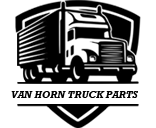
How To Identify What Type of Air Brake Pad You Need
Semi-trucks require durable brake pads to properly control the vehicle through tough terrain and long distances. Without these components, a driver could face hazardous conditions that put their truck and other drivers at risk. Identify what type of air brake pad you need by assessing your current systems and finding a compatible component that suits your daily operations.
Understanding Air Brake System Components
Air brake systems in semi-trucks differ from hydraulic brake systems found in passenger vehicles, as these systems rely on compressed air to engage brake pads against rotors or drums. These heavy-duty parts provide the substantial stopping power necessary for heavy commercial vehicles. Brake pads serve as the friction component that converts kinetic energy into heat energy during the braking process.
Your semi-truck’s air brake system contains several components that work together to function properly. The air compressor generates compressed air that travels through air lines to brake chambers. These chambers house diaphragms that activate brake shoes or pads when you apply the brake pedal. Understanding this system enables you to recognize when these parts start to show signs of wear and tear.
Assessing Your Current Brake Configuration
Before purchasing replacement brake pads, examine your existing brake setup thoroughly. Semi-trucks typically feature either drum brakes or disc brakes, and each configuration requires different pad specifications. For example, drum brake systems use brake shoes that press outward against the drum’s inner surface, while disc brake systems employ brake pads that clamp against rotors from both sides.
Check your vehicle’s documentation to determine the brake type installed on each axle. Many semi-trucks combine both systems and use disc brakes on the front axle and drum brakes on the rear axles. This mixed configuration provides balanced stopping power while managing heat dissipation effectively across different weight distributions.
Measure the dimensions of your current brake pads carefully. Then, record the length, width, and thickness of each pad, as these measurements directly impact compatibility with your brake calipers or brake shoes. Note the backing plate material and any specific mounting hardware required for installation.
Identifying Brake Pad Material Types

Air brake pads come in several material compositions, each offering distinct performance characteristics suited for different applications. Organic brake pads contain natural fibers, rubber, and other organic materials bonded with resin. These pads provide smooth, quiet operation but wear faster under heavy-duty conditions compared to other materials.
Semi-metallic brake pads incorporate metal fibers such as steel wool, copper, or iron into their composition. These pads deliver excellent heat dissipation and durability; however, they generate more noise during operation and may cause increased rotor wear over time.
For a reliable alternative, low-metallic brake pads use organic materials with small amounts of metal components, typically copper or steel. This combination offers improved heat dissipation compared to purely organic pads and provides quieter operation than semi-metallic alternatives. Many fleet operators choose low-metallic pads for their balanced performance characteristics.
Evaluating Your Operating Conditions
Your fleet’s operating conditions directly affect brake pad performance and reliability. Various terrains challenge brakes to handle the stress of steep grades, uneven surfaces, or smooth highways. In response, brakes must deliver consistent stopping power while withstanding the physical demands of these diverse surfaces.
Along with this, high temperatures during summer increase the risk of overheating, and harsh winters can reduce responsiveness as materials stiffen. Brakes that effectively dissipate heat and maintain flexibility enable your vehicles to perform dependably in extreme climates. Adapting to seasonal shifts minimizes risks and boosts operational consistency.
Environmental factors such as dust, moisture, and debris from construction sites, gravel roads, or urban streets can accelerate wear and reduce efficiency. Frequent braking in stop-and-go traffic or with heavy loads creates intense heat and pressure that can strain internal parts. Sturdy, heat-resistant components help brake systems withstand these stresses to meet the everyday demands of your operations.
Checking Load Specifications and Weight Ratings
Your truck’s gross vehicle weight rating (GVWR) and typical payload should directly impact brake pad selection. Heavier loads require brake pads with higher friction coefficients and effective heat management capabilities. To achieve these results, review your truck’s specifications to determine the maximum weight your brake system can handle safely.
Calculate your average operating weight by considering your typical cargo loads, fuel capacity, and additional equipment. Underspecified brake pads may fail prematurely or provide inadequate stopping power when fully loaded. By monitoring your vehicle’s loads accordingly, you can determine whether standard-duty or heavy-duty brake pads better suit your operations.
As you conduct these analyses, consider seasonal weight variations if your operations involve different cargo types throughout the year. Some trucking operations handle heavier loads during specific seasons and require brake pads that accommodate these peak periods. If your business handles a variety of cargo weights and structures, a versatile brake pad will provide year-round support.
Matching Brake Pads to Manufacturer Specifications
Each brake pad manufacturer provides detailed specifications that you must confirm align with your truck’s requirements. These specifications include friction coefficient ratings, temperature ranges, and compatibility information for specific brake system configurations. Compare these specifications against your truck’s brake system requirements to identify what type of air brake pad you need for proper maintenance.
OEM (original equipment manufacturer) specifications are reliable sources to refer to as you make your brake pad selection. While aftermarket options may offer performance improvements or cost savings, they must meet or exceed OEM standards for safe operation. Verify that any aftermarket brake pads you purchase carry appropriate certifications and testing documentation.
Also, consider the warranty coverage provided by different brake pad manufacturers. Comprehensive warranties indicate a manufacturer’s confidence in their products and protect your investment. As you determine which brake part works best for your operations, review warranty terms carefully to understand coverage limitations and requirements for maintaining warranty protection.
Installation and Compatibility Factors

Verify that your maintenance facility possesses the necessary equipment and expertise for brake pad installation. Improper installation compromises brake performance and creates safety hazards for drivers. Professional installers will establish proper torque specifications, adjustment procedures, and system testing.
During the installation process, check for any special requirements such as break-in procedures or initial adjustment protocols to achieve optimal performance and longevity. Following these procedures prevents premature wear and offers consistent braking performance.
To protect your business and drivers, Van Horn Truck Parts supplies heavy-duty truck brake parts suitable for numerous brands. Partner with our automotive specialists to determine which component best works for your vehicle.

